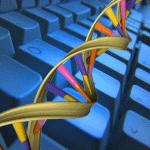Bioinformatics
|
19 april 2014 11:35:42 |
| Importance of polarization effect in the study of metalloproteins: Application of polarized protein specific charge scheme in predicting the reduction potential of azurin (Proteins: Structure, Function, and Bioinformatics) |
|
Tweet Molecular dynamics (MD) simulation is commonly used in the study of protein dynamics and in recent years, the extension of MD simulation to the study of metalloproteins is gaining much interest. Choice of force field is crucial in MD studies and the inclusion of metal centers complicates the process of accurately describing the electrostatic environment that surrounds the redox centre. Herein, we would like to explore the importance of including electrostatic contribution from both protein and solvent in the study of metalloproteins. MD simulations with the implementation of thermodynamic integration will be conducted to model the reduction process of Azurin from Pseudomonas aeruginosa. Three charge schemes will be used to derive the partial charges of azurin. These charge schemes differ in terms of the amount of immediate environment, respective to copper, considered during charge fitting which ranges from the inclusion of copper and residues in the first coordination sphere during DFT charge fitting to the comprehensive inclusion of protein and solvent effect surrounding the metal centre using polarized protein-specific charge (PPC) scheme. From the simulations conducted, the relative reduction potential of the mutated azurins respective to that of wild type azurin (?Ecal) were calculated and compared to experimental values. The ?Ecal approached experimental value with increasing consideration of environmental effect hence substantiating the importance of polarization effect in the study of metalloproteins. This study also attests the practicality of PPC as a computational tool capable of incorporating both protein environment and solvent effect into MD simulations. © Proteins 2014;. © 2014 Wiley Periodicals, Inc. |
| 144 viewsCategory: Biochemistry, Bioinformatics |
 Why is the biological hydrophobicity scale more accurate than earlier experimental hydrophobicity scales? (Proteins: Structure, Function, and Bioinformatics) Why is the biological hydrophobicity scale more accurate than earlier experimental hydrophobicity scales? (Proteins: Structure, Function, and Bioinformatics)Insights into a highly conserved network of hydrogen bonds in the agonist binding site of nicotinic acetylcholine receptors: A structural and theoretical study (Proteins: Structure, Function, and Bioinformatics) 
|
| blog comments powered by Disqus |
MyJournals.org
The latest issues of all your favorite science journals on one page
The latest issues of all your favorite science journals on one page



